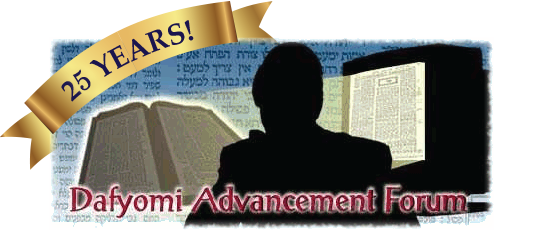When was this Parshah said?
Rashi, Ramban and Seforno: it was said on the eventh of Sivan, after Matan Torah. 1
R. Bachye: It was said before Matan Torah. 2
Where did Moshe ascend to?
Ramban #1: This is merely a repetition of Pesukim 1 & 2. 1
Ramban #2 (ha'Emunah ve'ha'Bitachon Perek 6): Hashem told Moshe to rise level after level.
What are the connotations of "ve'Heyei Sham"?
Rashi: That referred to the initial forty days that Moshe was destined to spend on Har Sinai learning the Torah.
Ramban: Moshe was to remain remain there until Hashem gave him the Luchos.
Seforno: In refers to an extended, unspecified, period of time. 1
Similar to what the Pasuk writes in Eikev, Devarim 10:5, in connection with the Luchos).
What is the significance of the fact that the Luchos were made of stone?
Hadar Zekeinim #1: One who engages in Torah must have jaws that are as tough as stone to bear the yoke of [constantly speaking words of] Torah.
Hadar Zekeinim #2: One who engages in Torah must have jaws that are as tough as stone - to have the audacity to ask for reasons for what he learns. 1
Hadar Zekenim: As the Mishnah says in Pirkei Avos (2:5) 'Someone who is shy cannot learn' - whereas someone who does will be elevated.
"Ve'etnah l'cha es Luchos ha'Even ve'ha'Torah ve'ha'Mitzvah ... ". What is "ha'Torah ve'ha'Mitzvah " referring to?
Rashi, R. Bachye #1, Rashbam and Targum Yonasan: It refers to the Aseres ha'Dibros which Hashem inscribed with His Finger on the Luchos 1 and which incorporated (hinted at - Targum Yonasan) the Taryag Mitzvos (and the rest of the Torah - Targum Yonasan). 2
Ramban #1: " ? asher Kasavti" refers to the Luchos, and "Lehorosam", to the Torah and Mitzvos 3 (that Hashem would teach him during the time that he was on Har Sinai).
Ramban #2 (citing the Midrash) and R. Bachye #2: It hints at the fact that the entire Torah was written in front of Hashem already before the Creation.
R. Bachye #1 (B'rachos, 5a): "Luchos" refers to Torah and Mitzvos; "Torah, to Chumash; "Mitzvah", to Mishnah; 4 "asher Kasavti", to Nevi'im and Kesuvim 5 and "Lehorosam, to Gemara, 6 all of which were given to Moshe on Har Sinai. 7
Seforno: "ha'Torah" refers to the part of Torah that needs to be studied; "ve'ha'Mitzvah", to the Halachos. 8
Targum Yonasan: It refers to the rest of the Torah and the Taryag Mitzvos that are hinted in the Luchos.
Moshav Zekenim: "Luchos ha'Even ve'ha'Torah" refer to Chukim and Mishpatim, respectively; "ve'ha'Mitzvah" refers to Mishnah, and "asher Kasavti", to Nevi'im and Kesuvim. 9
Refer to Vayikra, 26:46:1:2.
See Sifsei Chachmim.
Rashi: R. Sa'adyah Ga'on actually connects each of the Taryag Mitzvos to one of the Aseres ha'Dibros.
Ramban: As the Torah explains in Va'eschsnan, Devarim 5:28.
See Torah Temimah note 25.
See Torah Temimah note 26.
See Torah Temimah note 27.
See Torah Temimah note 28 who elaborates.
Seforno: All of which, if not for the sin of the golden Calf, Hashem would have handed to Moshe in His own handwriting, like He did the Luchos, as the Torah writes in Ha'azinu, Devarim 33:2, and it was due to the fact that they sinned that He subsequently commanded Moshe to transcribe it (See Ki Sisa, Sh'mos 34:27) As a matter of fact, Yisrael lost all rights, not only to the Divinely-written Luchos - which Moshe only brought them down in order to smash them in front of the people, to shock them into doing Teshuvah, but also to the Divinely-written Torah, which Moshe subsequently wrote piee by piece as the events occurred. Refer also to 3:18:151:1.
See Moshav Zekenim:
What is the significance of the comparison of "Mitzvah" to "Torah"?
Yerushalmi B'rachos, 6:1: It teaches us that Mitzvos, like Torah-study, require a B'rachah to be recited before performing them. 1
See Torah Temimah, note 30.
What are the connotaions of "Lehorosam"?
Ramban: Refer to 24:12:5:2.
R. Bachye #1: It means that Torah and Mitzvos are the road that lead to Olam ha'Ba. 1
R. Bachye #2: Refer to 24:12:5:7.:
R. Bachye #3: "Lehorosam" spells 'Lamed' 'Mem' 'Torah' - In keeping with the statement ? in Osiyos de'R. Akiva 'Shiv'im Panim la'Torah' ('Torah has seventy explanations').
R. Bachye #4 (according to Kabalah): "Lehorosam" minus a 'Vav' (after the 'Reish') refers to the Midah of 'Keneses Yisrael', 2 and the Torah is teaching us that Torah and Mitzvos led a person to Keneses Yisrael and from there the Nefesh goes to Olam ha'Ba.
Seforno: Even though everything - even the oral Torah - is included in the written Torah, 3 Moshe had to teach it to them independently. 4
R. Bachye: As the Pasuk writes in Mishlei 4:4.
R. Bachye: From the Lasshon "el Cheder Horasi" (Shir Hashirim 3:4).
As the Gemara writes in Ta'anis, 9a 'Is there anything in Nevi'im and Kesuvim that Moshe did not hint at in the Torah?'
See Seforno.




